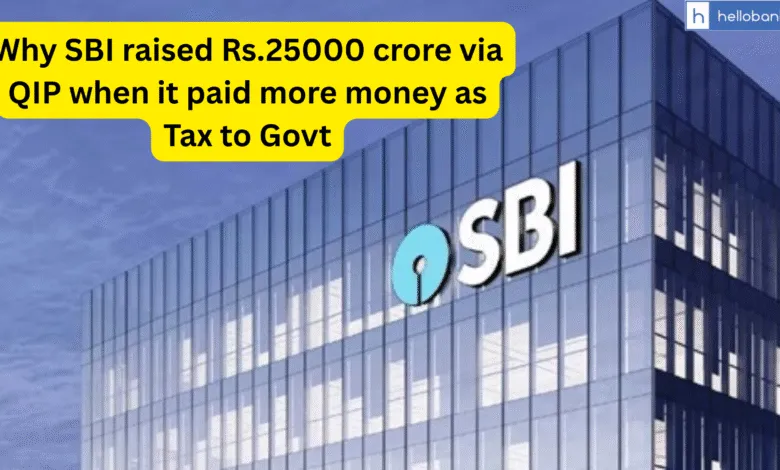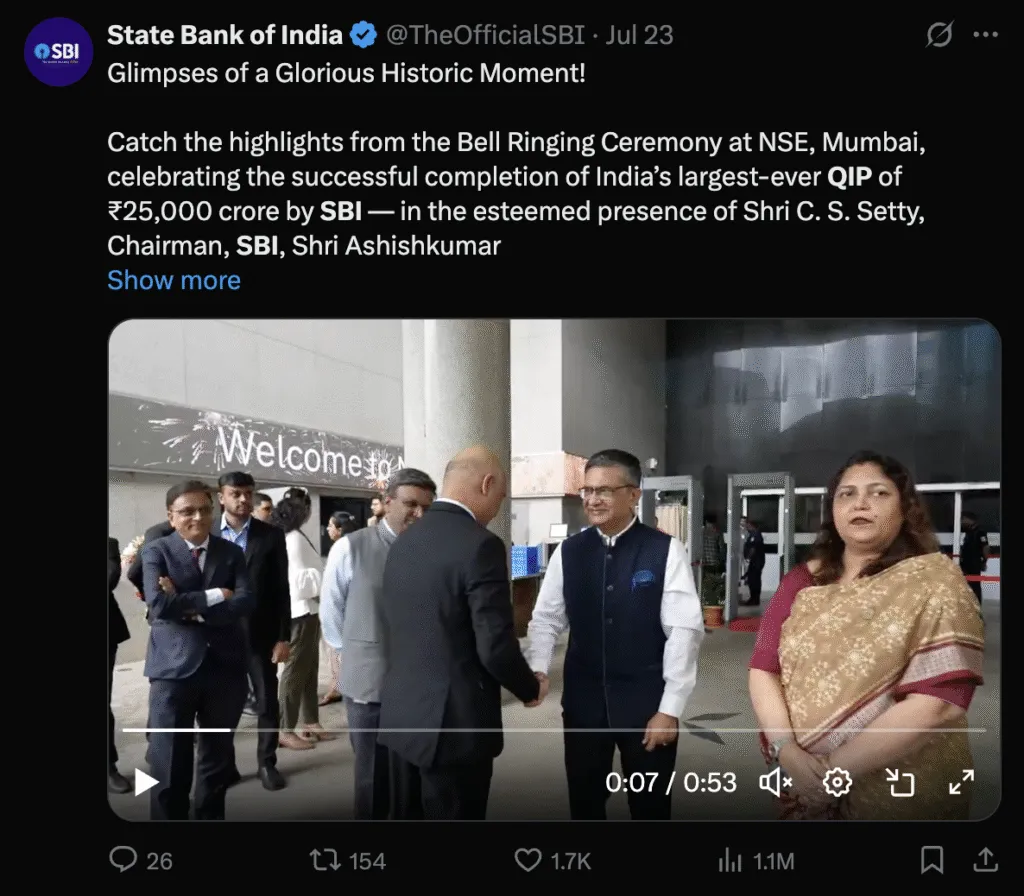Why SBI raised Rs.25000 crore via QIP when it paid more money as Tax to Govt

Did You Know? State Bank of India (SBI) has paid over Rs.25,000 crore as Corporate Tax in FY2024-25.
Yes you read it right – SBI has paid over Rs.25,000 crore as Corporate Tax in Financial Year 2024-25. Not only this, SBI has remitted more than Rs.26,000 crore as TDS (Tax Deducted at Source) and submitted 18.5 crore TDS records. SBI has also reported 42.5 crore records in the Statement of Financial Transactions (SFTs).
State Bank of India (SBI) has also been recognised as one of the Top Income Taxpayers in Maharashtra – the state where a lot of bankers have been physically assaulted for not speaking Marathi Language.
SBI had launched Rs.25,000-crore qualified institutional placement (QIP) on 16th July 2025. This QIP is being presented as a historic event. SBI called the event as historic and yes it is – becuase this is the first time since 2017 that SBI has tapped the equity market to raise capital. The SBI had last used the QIP method in the financial year 2017-18 (Apr-Mar), to raise Rs 15,000 crore.

Click here to know who purchased stake in SBI via QIP
But the point to note is — if a bank can pay ₹25,000 crore as tax, then is ₹25,000 crore really a big amount for that bank? Why did SBI have to raise ₹25,000 crore from the market when it has the ability to generate such high revenue?
Not only that, SBI also paid ₹8,076.84 crore as dividend to the Government of India in FY 2024–25. Imagine how much tax and dividend SBI is paying, yet it still has to raise money from the market. With this QIP, the Government’s stake in SBI might decrease. As of 31 March 2025, Government has 56.92% stake in SBI.
On one hand, the Government is collecting tax from SBI, and on the other, SBI is being forced to raise money from the market. Users are asking – Is the government deliberately decreasing its stake in SBI and other banks through capital raising?
Indian government-owned banks are planning to raise around ₹45,000 crore by selling shares to large investors during the financial year 2025–26, with ₹25,000 crore raised by SBI alone.
The Government of India owns public sector banks. If there is a liquidity shortage in these banks, the government can re-infuse the money it takes from them in the form of tax and dividends. This way, the government’s stake in the banks will not decrease, and the banks will still receive the capital they need.
What do you think about this? Let us know in the comments below.
